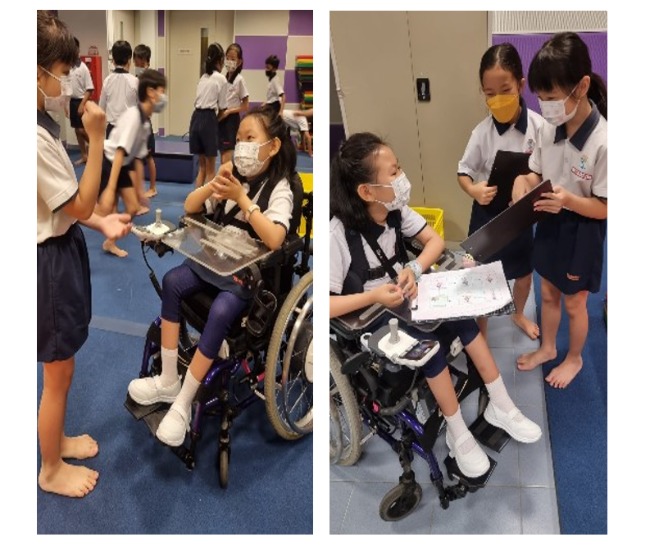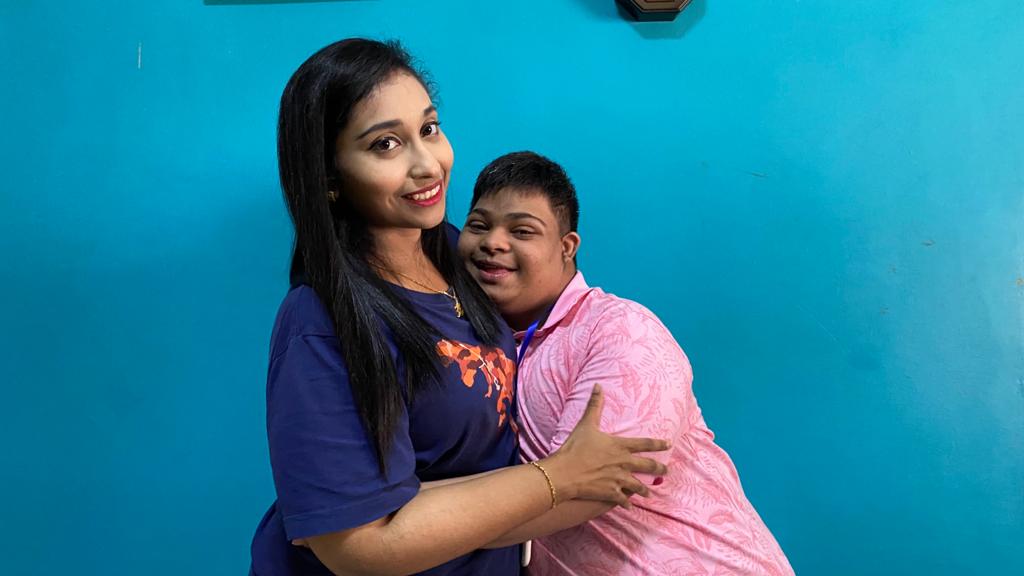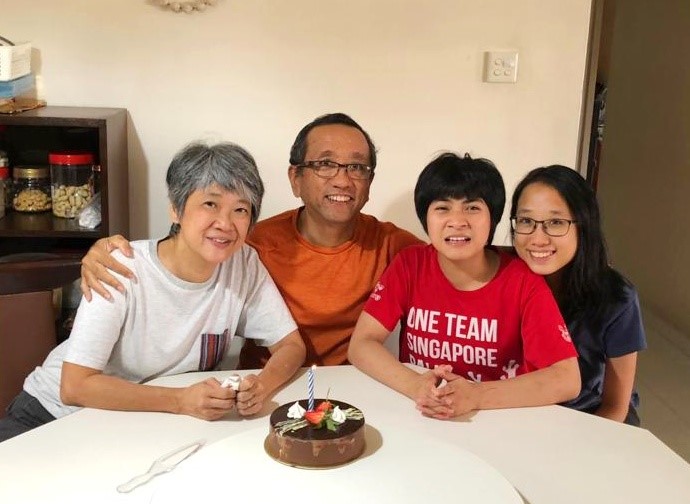Possibilities, not disabilities
19 Jan 2023
.jpg)
This is the guiding philosophy for three schools that received the “Outstanding School Award” at the 30th AWWA Community Integration Service Awards (CIS) last year. This award, presented to schools that partner AWWA to support students with Special Educational Needs (SEN), such as physical or visual impairment, recognises their whole-school approach to promoting inclusivity. Here, some snapshots of their efforts.
By Lim Jun Kang
Learning Together: Princess Elizabeth Primary School
The school’s mission: “Together, we nurture and inspire an inclusive spirit.”
A great example of this philosophy is their Values-in-Action (VIA) programme, called Learning Our Values with Empathy (LOVE) Experience. Empathy is the school’s core value, which they seek to nurture in all their students. As part of the LOVE Experience, students at different levels of the school are allocated “focus areas” where they learn about the needs of different groups of people in the community. The students apply their skills from the school’s Applied Learning Programme in Inclusive Design, to brainstorm and come up with creative solutions and prototypes to benefit the users.
The collaboration with AWWA for this VIA programme resulted in the effective implementation of interventions and strategies to support students with SEN. For instance, Primary 2 students learned to create Light-Up Toys for their peers with hearing loss at Canossian School. Primary 5 students created e-books to guide other students with Autism on specific life skills, such as how to cross the road safely.
The school hopes that other students will be aware of the’ needs of others, and more importantly develop a sense of empathy.
.jpg) This prototype is for a reading game, which aims to get students with dyslexia to learn to read faster. It was designed by Primary 4 students.
This prototype is for a reading game, which aims to get students with dyslexia to learn to read faster. It was designed by Primary 4 students.
.jpg) In one of the LOVE Experience’s exercises, students attempt to read while their vision is obscured – an opportunity for them to walk in the shoes of someone with visual disabilities.
In one of the LOVE Experience’s exercises, students attempt to read while their vision is obscured – an opportunity for them to walk in the shoes of someone with visual disabilities.
Mdm Chua Xin Rong, Subject Head of Student Well-Being, shares, “Over the years, we have observed how the general student population has grown much more conscious of the needs of their friends with SEN and this awareness is translated into tangible actions to help one another.”
Small actions, big impact: Zhenghua Secondary School
Step into the school’s indoor sports hall for any Physical Education (PE) lesson, and you will experience the inclusive philosophy that the school lives by.
Students with physical disabilities, especially those who require the assistance of a wheelchair, play badminton with shorter racquets to allow them to handle the equipment with comfort and ease. During volleyball lessons, large foam beach balls, which are softer and easier to catch, are used as an alternative to the traditional volleyballs made of a tougher material.
.jpg) A normal badminton
A normal badminton
racquet (left) vs a shorter badminton racket (right) for wheelchair users.
.jpg) The large foam beach
The large foam beach
ball (left) is used to help wheelchair users play Volleyball. The blue and
yellow ball (centre), which is padded, is for students learning to serve or
hit. The impact is less painful compared to the normal volleyball (right).
Outside of sports, the school’s inclusive ethos is seen in the access ramps across campus and the adjustable tables in the canteen and classrooms, so that students in wheelchairs can slide their wheelchairs in and use the tables easily.
“It was our intention to be a ‘barrier-free’ school, and it starts with creating physical spaces that allow students in wheelchairs to feel comfortable,” says Ms Magdalene Tan Li Ping, Year Head.
She shares an example on how the school quickly sprung into action when they realised that the ramp leading towards the school hall was uncovered and students using wheelchairs were exposed to the elements. A ramp has since been built to shield the students from the sun and rain.
“We wanted to ensure that these students’ social interaction and school participation would not be compromised,” she says.
.jpg) A table with adjustable height that allows wheelchair users to write comfortably according to their needs. The school consulted with AWWA on how best to accommodate specific needs of students.
A table with adjustable height that allows wheelchair users to write comfortably according to their needs. The school consulted with AWWA on how best to accommodate specific needs of students.
Instilling confidence in every child: Cantonment Primary School
At the school-wide Games Day, students in wheelchairs acted as ‘judges’ for their peers during a gymnastics segment.
Prior to the games, PE teachers had gone through the basic movements in gymnastics – from forward rolls to tuck jumps – with all students and encouraged them to plan their own routines. Students with mobility issues shared their imagined routines with their classmates , who executed the moves. Then they observed the routines as ‘judges’ and encouraged them in their efforts. In this way, they were part of the games, too.
Regular interactions such as these help the entire school community understand their schoolmates with SEN.
“School is a microcosm of society and we want students to be able to accept and embrace differences just as you would in the real world,” says Mrs Audrea Chin, Vice-Principal (Academic), and “this awareness should be inculcated from a young age.”
The school actively creates opportunities that allow all students to get involved. During the football segment, the school modifies the goal posts for students in wheelchairs, with teachers and SEN Officers placing the ball near the feet of the student, and gently guiding their legs to move the ball towards the goal to help him or her “score”. There was also an obstacle course where students in wheelchairs partnered their peers, with one holding the ball while the other pushed the wheelchair.
AWWA Occupational Therapists provided tips and worked closely with school personnel to modify the PE equipment to allow students with physical disabilities to participate in the games, which are also used beyond Games Day. These simple ideas prove that students with SEN, even if they have additional needs, are not left out as they are capable of participating in one way or another.
 Xinyi, a wheelchair-using student, sharing her observations with her friends , who executed a gymnastic routine that she planned.
Xinyi, a wheelchair-using student, sharing her observations with her friends , who executed a gymnastic routine that she planned.
When schools start to look at possibilities instead of disabilities, no child is left behind.
This article was developed in collaboration with MOE’s Special Educational Needs Division.
More stories on how mainstream schools are helping students with special needs:
Helping students with special needs in mainstream schools
Preparing your child with special educational needs for a mainstream school
We are on Telegram! Subscribe to our channel: https://t.me/schoolbag_edu_sg

.jpg)
.jpg)


